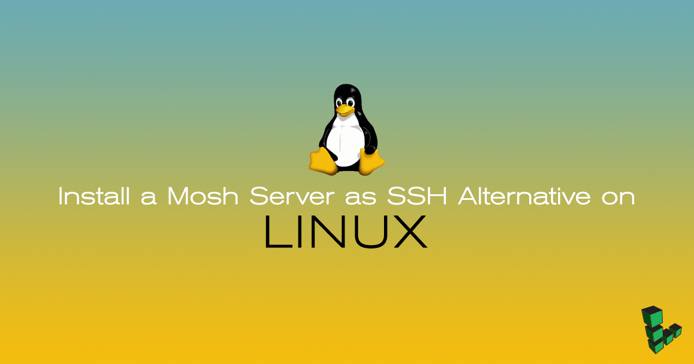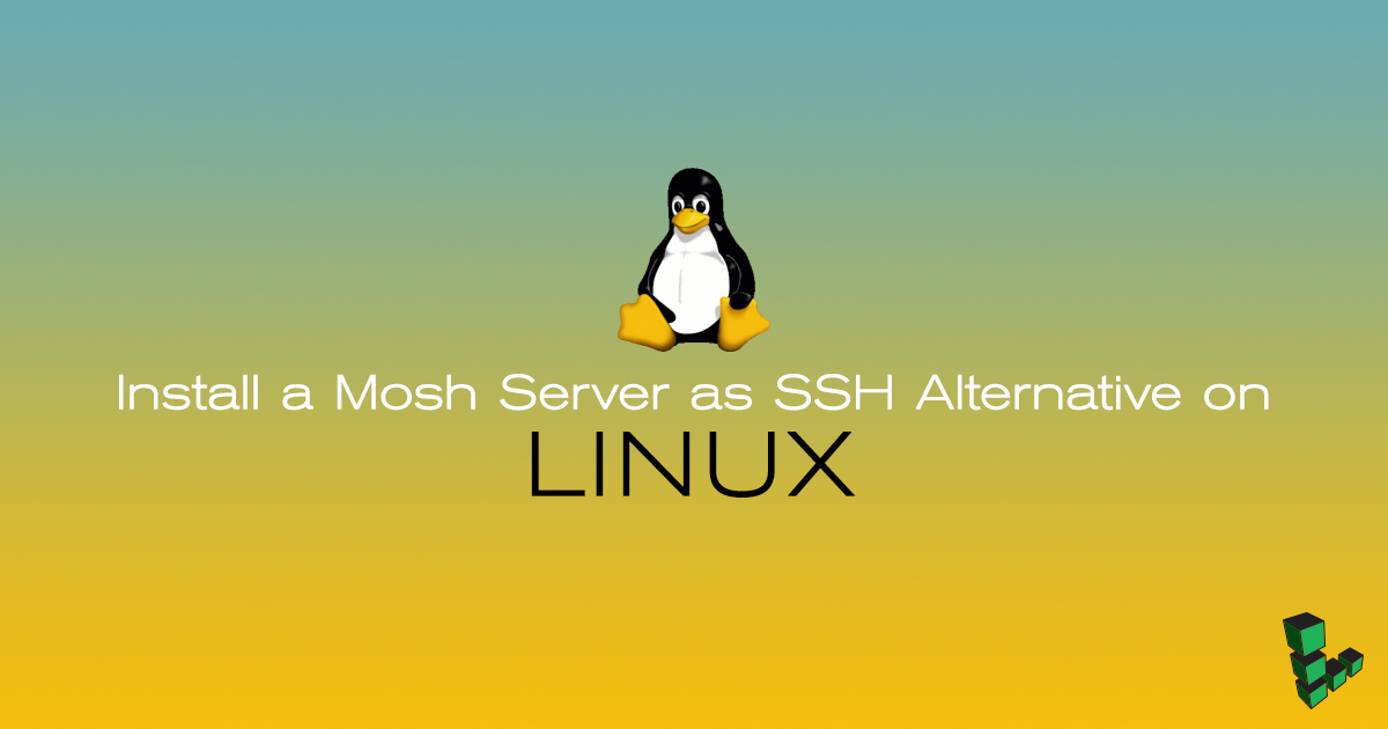Product docs and API reference are now on Akamai TechDocs.
Search product docs.
Search for “” in product docs.
Search API reference.
Search for “” in API reference.
Search Results
results matching
results
No Results
Filters
Install a Mosh Server as SSH Alternative on Linux
Traducciones al EspañolEstamos traduciendo nuestros guías y tutoriales al Español. Es posible que usted esté viendo una traducción generada automáticamente. Estamos trabajando con traductores profesionales para verificar las traducciones de nuestro sitio web. Este proyecto es un trabajo en curso.



Mosh is a free replacement for SSH that allows roaming and supports intermittent connectivity. Unlike regular SSH connections, Mosh continuously syncs your local and remote sessions to ensure that your client automatically reconnects to the server when you switch between wireless networks or wake your computer from sleep. This guide explains how to install Mosh on your Linode and your personal computer.
Mosh SSH Benefits
There are several benefits of using Mosh to connect to your Linode:
- Continuous Connection: If your network connectivity is interrupted, Mosh will try to reconnect using any available Internet connection.
- Reduced Network Lag: Unlike SSH, which waits for the server’s response before displaying what you typed, Mosh provides instant responses to typing, deleting, and line editing.
- Like SSH, Only Better: Mosh runs inside regular terminal applications and logs in to the server via SSH.
Ready to get started? Let’s go!
Preparing Your Firewall
Before installing Mosh, you should verify that your Linode’s firewall will allow the Mosh client and server to communicate. If you
followed our instructions to create a firewall with iptables, you’ll need to edit /etc/iptables.firewall.rules and add another rule to allow the Mosh client to connect to your Linode over UDP ports 60000–61000.
- File: /etc/iptables.firewall.rules
1-A INPUT -p udp --dport 60000:61000 -j ACCEPT
Activate the new firewall rule by entering the following command:
sudo iptables-restore < /etc/iptables.firewall.rules
Mosh can now communicate with your Linode.
Install Mosh on Your Linode
First, you need to install Mosh on your Linode. Find the instructions for your Linux distribution below.
Ubuntu
Install mosh from the developer’s PPA repository by entering the following commands, one by one:
sudo apt-get install python-software-properties
sudo add-apt-repository ppa:keithw/mosh
sudo apt-get update
sudo apt-get install mosh
Mosh is now installed on your Linode.
Debian
Mosh is available in Debian’s backports repositories. You’ll need to add squeeze-backports to your sources.list, update your package information, then install from the backports repository. Here’s how:
Edit
/etc/apt/sources.listand add the following line:- File: /etc/apt/sources.list
1deb <http://backports.debian.org/debian-backports> squeeze-backports main
Run
apt-get update.Install mosh from squeeze-backports by entering the following command:
apt-get -t squeeze-backports install "mosh"
Mosh is now installed on your Linode.
Arch Linux
Mosh is available in the Arch Linux repositories. Enter the following command to install it:
pacman -S mosh
Mosh is now installed on your Linode.
Other Distributions
If you have another Linux distribution installed on your Linode, see the Mosh website for installation instructions.
Install Mosh on Your Desktop Computer
Now you need to install Mosh on your desktop computer. Find the instructions for your computer’s operating system below.
Linux
Follow the instructions for your distribution listed in the Installing Mosh on Your Linode section, or see the Mosh website.
Mac OS X
The easiest way to install Mosh in OS X is to download the installation package from the Mosh website.
Or, if you prefer, you can automate the process of downloading, compiling, and installing Mosh with Homebrew. Note that you must already have Homebrew installed.
brew install mobile-shell
Mosh is now installed on your computer.
Windows
There is not currently a native Mosh client available for the Windows operating system. Please see this issue for additional information.
Connecting with Mosh
The syntax for connecting to a remote server with Mosh is similar to ssh:
mosh yourusername@host.yourdomain.com
Mosh will log in to the server via SSH and then connect on a UDP port between 60000 and 61000.
You can also connect to an SSH daemon that is running on an alternate port:
mosh yourusername@host --ssh="ssh -p 2222"
Congratulations! You’ve just connected to your server with Mosh!
This page was originally published on


